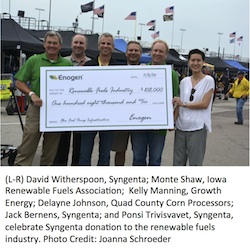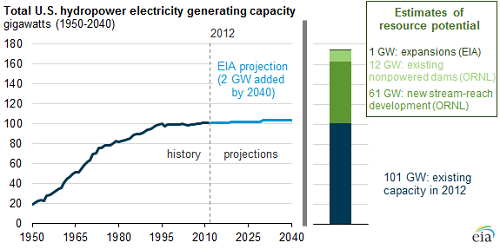During the American Ethanol 200 presented by Enogen taking place at the Iowa Speedway today, Syngenta announced that they are donating $108,000 to the renewable fuels industry to make flex fuels more widely available. The funds will be used for flex fuel pump infrastructure to help bring more mid-level ethanol blends such as E15 and E30 along with E85 available to consumers. The donation is part of a three-year commitment, known as the $1 per acre donation, announced in 2013 to contribute $1 to the ethanol industry for every acre planted with Enogen trait technology.
 In addition to this year’s $1 per acre donation, Syngenta is also working with Iowa FFA chapters in a collaborative effort to match those dollars through a fund raising initiative taking place during the American Ethanol race weekend.
In addition to this year’s $1 per acre donation, Syngenta is also working with Iowa FFA chapters in a collaborative effort to match those dollars through a fund raising initiative taking place during the American Ethanol race weekend.
“Syngenta is pleased to continue its support for the ethanol industry by donating $1 for every acre of Enogen® seed planted during 2014 – and to be partnering with the FFA to make that donation go even further,” said David Witherspoon, head of Renewable Fuels at Syngenta. “Last year, the money was used to defend the Renewable Fuels Standard. The focus of this year’s donation – and matching dollars – will be to make flex fuels more accessible and provide consumers with a choice at the gas pump.”
According to Growth Energy, more than 170 million cars – those manufactured since 2001 – are eligible to use E15. And, there are more than sixteen million flex fuel vehicles on the roads today, with more on the way. Witherspoon added that helping the industry expand its flex fuel pump footprint will enable consumers to have a choice to purchase a superior higher octane fuel, and pay less.
“Clearly, we have the vehicles capable of using blends higher than E10 – but consumers need greater access to stations capable of providing it – and the petroleum marketing industry’s support to make that access a reality,” Witherspoon said. “The widespread availability of flex fuel vehicles – as well as those eligible to use E15 – demonstrates that there is a market ready for a less expensive, higher octane, more environmentally friendly alternative fuel.”
Listen to my interview with David Witherspoon here: David Witherspoon interview
Visit the 2014 American Ethanol 200 presented by Enogen photo album.

 In a setback to the regulated utility model, the Iowa Supreme Court has ruled that a power purchase agreement (PPA) between the city of Dubuque and Eagle Point Solar does not violate state law. Regulated utility companies had fought the arrangement, claiming to have exclusive rights to sell to customers in their service areas. On Friday, July 11, 2014 Iowa’s high court disagreed.
In a setback to the regulated utility model, the Iowa Supreme Court has ruled that a power purchase agreement (PPA) between the city of Dubuque and Eagle Point Solar does not violate state law. Regulated utility companies had fought the arrangement, claiming to have exclusive rights to sell to customers in their service areas. On Friday, July 11, 2014 Iowa’s high court disagreed.










